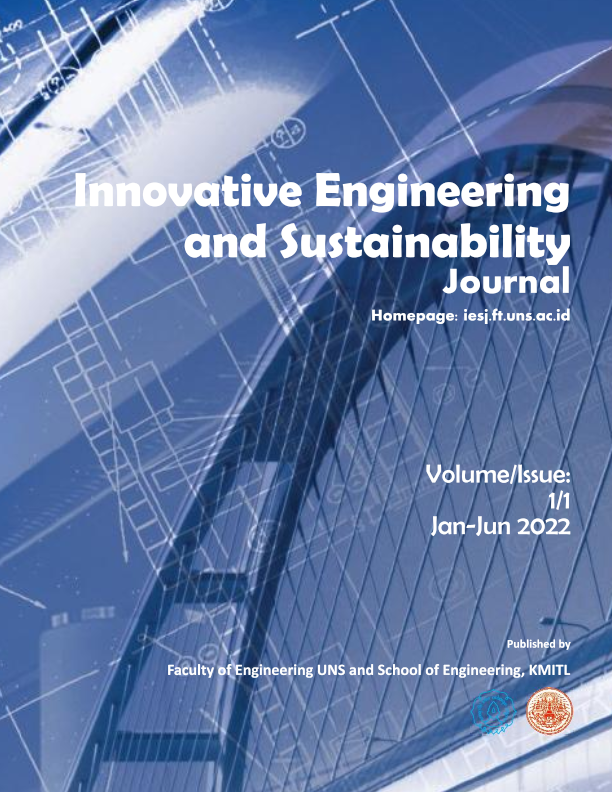Main Article Content
Abstract
Flood disasters are ubiquitous and may occur anywhere as long as certain hydrological, hydrometeorological and topographical conditions are met. The impacts of floods may include social, economic, and environmental aspects, and therefore the losses due to floods are usually varies with respect to the wide range of its tangibility and intangibility. One of the standards of analysis of a flood control project is economic viability, the elements for this analysis could be either tangible or intangible components of costs and benefits. While the tangible benefit components are usually effortless to quantify, the intangible ones are, in the contrary, complicated and challenging. This study attempts to quantify the intangible benefits of the flood control works in monetary terms, as an effort to develop transfer functions to translate intangible benefits to quantifiable ones. The study was undertaken by reviewing extensive numbers of sources of concepts and best practices all over the world.
Keywords
Article Details

This work is licensed under a Creative Commons Attribution-NonCommercial-NoDerivatives 4.0 International License.
References
- Alba, J. W., & Williams, E. F. (2013). Pleasure principles: A review of research on hedonic consumption. Journal of consumer psychology, 23(1), 2-18.
- Cazenave, A., & Cozannet, G. L. (2014). Sea level rise and its coastal impacts. Earth's Future, 2(2), 15-34.
- Commons, J. R. (1935). Communism and collective democracy. The American Economic Review, 212-223.
- Daniell, J., Wenzel, F., & Schaefer, A. (2016, April). The economic costs of natural disasters globally from 1900-2015: historical and normalised floods, storms, earthquakes, volcanoes, bushfires, drought and other disasters. In EGU general assembly conference abstracts (pp. EPSC2016-1899).
- Disney, S. M., & Towill, D. R. (2002). A discrete transfer function model to determine the dynamic stability of a vendor managed inventory supply chain. International Journal of Production Research, 40(1), 179-204.
- FitzGerald, D. M., Fenster, M. S., Argow, B. A., & Buynevich, I. V. (2008). Coastal impacts due to sea-level rise. Annu. Rev. Earth Planet. Sci., 36, 601-647.
- Jury, W. A. (1982). Simulation of solute transport using a transfer function model. Water Resources Research, 18(2), 363-368.
- Livne, G. (2000). Information asymmetry, investment horizons, and the dual role of public announcements. Review of Accounting Studies, 5(2), 127-153.
- Rodolfo, K. S., & Siringan, F. P. (2006). Global sea‐level rise is recognised, but flooding from anthropogenic land subsidence is ignored around northern Manila Bay, Philippines. Disasters, 30(1), 118-139.
References
Alba, J. W., & Williams, E. F. (2013). Pleasure principles: A review of research on hedonic consumption. Journal of consumer psychology, 23(1), 2-18.
Cazenave, A., & Cozannet, G. L. (2014). Sea level rise and its coastal impacts. Earth's Future, 2(2), 15-34.
Commons, J. R. (1935). Communism and collective democracy. The American Economic Review, 212-223.
Daniell, J., Wenzel, F., & Schaefer, A. (2016, April). The economic costs of natural disasters globally from 1900-2015: historical and normalised floods, storms, earthquakes, volcanoes, bushfires, drought and other disasters. In EGU general assembly conference abstracts (pp. EPSC2016-1899).
Disney, S. M., & Towill, D. R. (2002). A discrete transfer function model to determine the dynamic stability of a vendor managed inventory supply chain. International Journal of Production Research, 40(1), 179-204.
FitzGerald, D. M., Fenster, M. S., Argow, B. A., & Buynevich, I. V. (2008). Coastal impacts due to sea-level rise. Annu. Rev. Earth Planet. Sci., 36, 601-647.
Jury, W. A. (1982). Simulation of solute transport using a transfer function model. Water Resources Research, 18(2), 363-368.
Livne, G. (2000). Information asymmetry, investment horizons, and the dual role of public announcements. Review of Accounting Studies, 5(2), 127-153.
Rodolfo, K. S., & Siringan, F. P. (2006). Global sea‐level rise is recognised, but flooding from anthropogenic land subsidence is ignored around northern Manila Bay, Philippines. Disasters, 30(1), 118-139.
